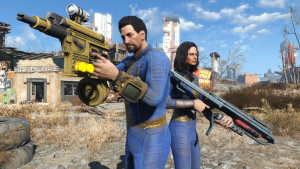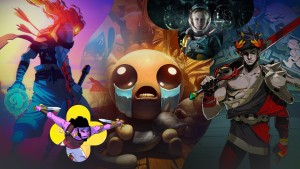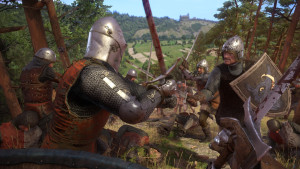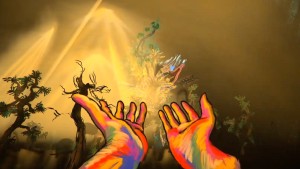Please support Game Informer. Print magazine subscriptions are less than $2 per issue
L.A. Noire
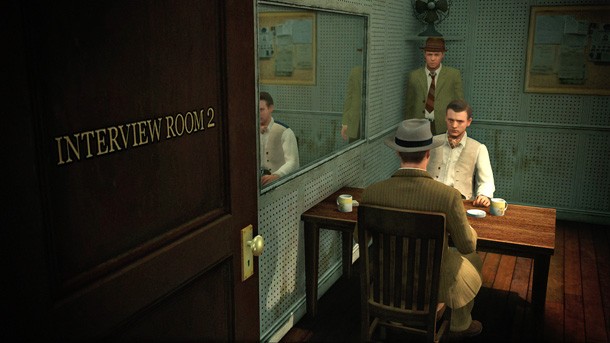
Rockstar just released the first trailer for its upcoming title L.A. Noire, which we revealed back in our March cover story. If you missed seeing it before, we're running the feature here in its entirety. Check it out to learn more about the setting, characters, and the mind-boggling technology that developer Team Bondi is putting to use.
Ambition.
No word better describes Rockstar Games. In the nine years since the release of its open-world crime epic Grand Theft Auto III, which stands among the most influential and successful games ever released, the company has used its GTA war chest in pursuit of games that few other companies in the industry would even attempt. From the brutal, violent stealth of the controversial Manhunt to the charming comic mischief of Bully, Rockstar continually digs deep into the history of pop culture and film for inspirations beyond the usual fantasy, military, and sci-fi clichés that fuel much of the industry’s output.
Despite courting controversy both outside the industry and within, it’s hard to argue with the results. The company’s games have exhibited enormous scope and unparalleled production values. When Rockstar offers you a chance to get a behind-the-scenes look into what they call their most ambitious title to date, you say yes.
Though L.A. Noire’s existence has been known for several years, facts about this title have been as hard to find as clues to the seedy murders that L.A. Noire’s protagonist, Cole Phelps, unravels throughout the course of the game. After seeing the game and the development process in action, it’s clear why the publisher has been so secretive. Team Bondi, the studio behind L.A. Noire, has set the bar almost impossibly high with this game. It’s not only creating the largest, most detailed open-world game to date, it’s attempting to resurrect the long-lost Los Angeles of the 1940s while adding an engaging new adventure-style investigation system to the familiar drive-and-shoot gameplay model. Oh, and along the way the company is pioneering some groundbreaking new technology that it hopes will forever change the way video games are made.
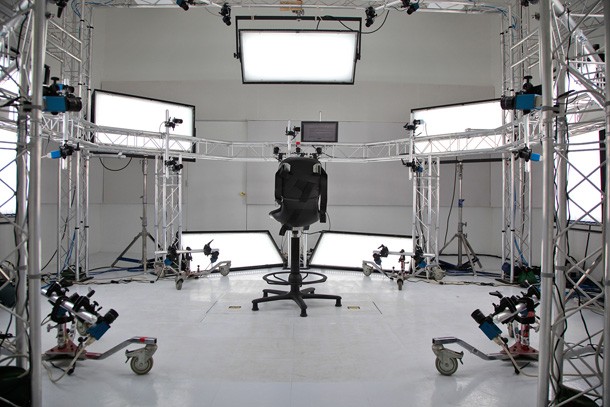
Filming Noir
Walking into a nondescript building in Los Angeles, I’m introduced to Team Bondi’s game director Brendan McNamara, who is wearing a headset microphone and quietly overseeing a buzzing scene that more resembles a Hollywood film production than a game studio. The soft-spoken Australian seems fairly relaxed considering his team is entering crunch time on his first major project since he shipped the PS2 gangster hit The Getaway in 2002. Numerous Rockstar and Team Bondi staffers are scuttling around, shuffling between the various rooms in the spartan warehouse facility.
In one room, Australian actress Erika Heynatz (famous as the original host of Australia’s Next Top Model) is sitting down for hair and makeup in a room filled with mirrors and hair dryers. Her hair is meticulously coifed into tight, elaborate buns and covered with a hairnet in the classic ‘40s style.
After some introductions, McNamara takes us to the heart of the operation: a soundproofed white room that feels like a lost set from the film 2001: A Space Odyssey. Heynatz sits in a chair as makeup artists make last minute adjustments to her hair and cosmetics. Surrounding her is complex scaffolding equipped with 32 stereo-matched cameras and assorted microphones that will capture her image from every possible angle.
Once up and running, the actor interacts with the director through a monitor posted directly in front of her head, getting the crucial line prompts and feedback on the performance. Once completed, every detail of the performance – dialogue, expression, eye movement, even makeup details like black eyes or burns – are directly pipelined into the game with no involvement from animators. In this way, L.A. Noire represents a total break with conventional game development and animation. Instead of recording dialogue, animating, and performing motion capture as separate steps of the process, Team Bondi (using technology developed by its sister company Depth Analysis) is capturing human performances just as a filmmaker would – except instead of generating movie footage, they come away with fully animated 3D models.
It’s a tremendously advanced process – Depth Analysis’ Oliver Bao, head of research and development, reveals that the company’s Australian facility is equipped to store 200 terabytes of capture data – but one that allows them to work more quickly than with traditional hand-animation techniques. “That’s the great thing about this system, there’s very little human interaction,” Bao observes. “Traditionally, one minute of facial animation could take a couple of animators a month. The idea is that we can mass-produce. We can produce about 20 minutes of final footage a day, and it’s seamless – I don’t even have character artists or animators working with me.”
For McNamara, it’s perhaps the most crucial aspect of L.A. Noire, because the game features an unprecedented volume of spoken lines, encompassing a script of around 2,000 pages. To put it in perspective, the average hour-long television show has about 50 pages, and a longer feature film’s script would be 200 (approximately one page per minute of running time). With these new tools, Team Bondi can produce results that are both faster and vastly improved over games of the past.
“We hadn’t had really good results with motion capture, using facial markers and all that,” McNamara recalls. “I’d been doing some research in the U.K. for a number of years on how you could do capture without markers. What we wanted to do was capture the exterior of people instead of the bones. What we have here is the final end of that process, where you put an actor in the chair and as we record it’s instantly turned into 3D. We think it’s pretty significant. The great thing about that is we think that the whole uncanny valley thing is out the window, because you can see people in the game and literally lip-read what they say.”
Seeing side-by-side comparisons of the actors with their in-game likenesses, it’s clear McNamara’s technical team (staffed mostly by Team Bondi’s sister company Depth Analysis) is treading new ground in terms of facial animation in games. At first, it’s almost eerie. From hair to the slightest raise of an eyebrow, the facial models are virtually indistinguishable from the real thing. “The actors are weirded out at first – everyone’s used to seeing themselves in 2D,” McNamara reveals.
Since the physical performance and dialogue reading are done at the same time, lip synching problems are non-existent, allowing the player to finally react to the characters as real actors in a way that even games like Uncharted 2 or Mass Effect haven’t achieved.
“Even the [games] I look at now that are great, there’s something about [the characters] that makes me think of a goldfish,” McNamara comments. “You have a million years of evolution that tells you how to read faces, so you just have to see one thing and it throws you off. With this game, it’s a line in the sand – before and after. That’s what it feels like to me. We used to do that; now we do this. In the end, we want you to interact with this and you don’t even ask the question ‘Is this real or not?’”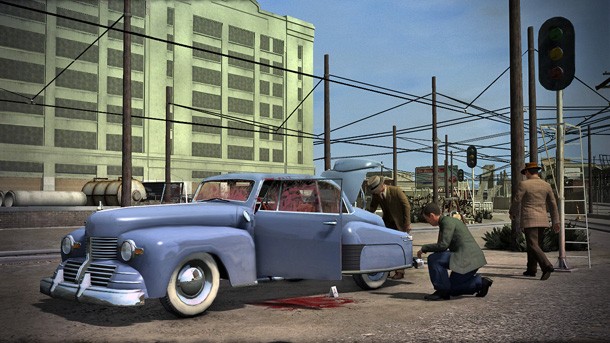
A Cast of Hundreds
This new way of working allows Team Bondi to work much faster, but it also brought about a host of new challenges. For one, since every character – from the protagonist to the last random pedestrian – had to be fully voiced and animated, the casting and capture process has grown to epic proportion. Right now, there are well over 300 actors and actresses being used in L.A. Noire.
The most notable of these is Aaron Staton, who plays lead character Cole Phelps. Best known as Ken Cosgrove in the acclaimed AMC series Mad Men, Staton is tasked with embodying the emotional core of Team Bondi’s epic noir saga. Speaking with him as he prepared for some test takes, the actor, a lifelong gamer, seemed enthusiastic about the project.
“Yeah, I’ve played most of [Rockstar’s games]. I played all the Grand Theft Autos. My favorite was Vice City. As far as open-world games, or anything with a story, in the past, I’ve usually skipped the cutscenes to go into the gameplay. Which is a funny thing, but I’m just being honest,” Staton observes. “[This game] is about trying to enhance the experience and bring those two together into a singular experience, rather than two separate things, where you’re playing, then you put the controller down and watch.”
The sterile confines of the recording unit present a challenge to even the most experienced actor. “I was in there for about an hour and a half, and this is my second day,” Staton says, “but my initial impression was that I’d never been in a completely soundproof room. That I realized once the door closed. It was just ‘whooooosh’ when it shut…The acting part of it is a strange thing. I have to rely on [the directors], because you’re sort of limited. You can only move side to side to 45 degrees. Within that, there is a lot of freedom, but it’s finding what the boundaries are and defining them so I can relax and feel comfortable within it.”
To help get natural performances from the actors in this unnatural environment, Team Bondi has hired veteran director Michael Uppendahl, who had previously worked with Staton on Mad Men.
“I try to stage people in a way that I think is lively and helpful to the story,” says Uppendahl. “I try to monitor the performances to make sure we’re getting the human element that’s going to make it compelling and interesting.”
For McNamara, who wrote a majority of the game’s script, Uppendahl’s assistance has proved invaluable, allowing them to quickly move through the reams of dialogue that must be recorded each day.
“We don’t cut until we have something that feels real. That’s the benefit of having Mike,” says McNamara. “If I try to explain something, I always explain the whole bloody 5,000 page story. Mike can cut through that because he works with these guys a lot. He knows what two words will get them to the right place. I’ll go ‘Well it’s blah, blah, blah, blah, blah” and then he’ll say, ‘Louder!’ and it works. [Laughs] The convergence of media is a big thing for me. People have talked about it for a long time, but my skills are converging with Mike’s skills and Aaron’s skills and vice versa. We are somehow getting what we want out of that.”
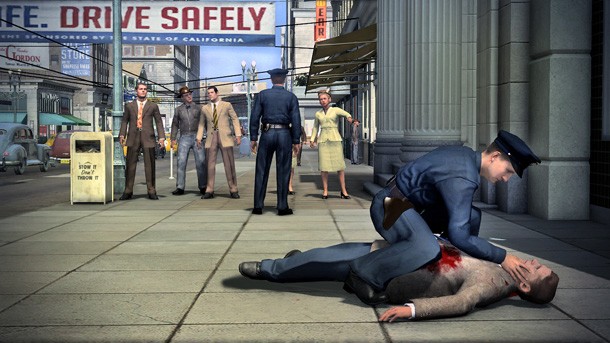
Reading Faces, Solving Cases
Technology for technology’s sake is one thing, but in L.A. Noire Team Bondi’s impressive new techniques aren’t just there for window dressing. It’s a core building block of the game itself.
L.A. Noire is not GTA in 1940s drag. The game revolves around real police work: interviewing suspects, collecting data, and piecing together the facts to reveal the truth. To do that, you have to be able to read faces and decide whether or not you’re being lied to – something only possible through the stunningly realistic facial capture Team Bondi has worked so hard to accomplish.
“It’s obviously cool technology, but the key thing for us is that when you’re interrogating someone, you can read their face and tell if they are lying,” McNamara claims. “That’s a key component of the gameplay.”
Producer Jeronimo Barrera considers L.A. Noire “an adventure game that plays like a GTA.”
At the beginning of our demo, Phelps and his partner Stephan Bekowsky pull up at a freight yard to check out a report on an abandoned car. Something fishy is going on. Phelps inspects the scene, noting that the car’s interior is drenched with blood. Nearby is a bloody pipe, which seems to suggest foul play. A street cop on the scene tells us the car is registered to a Mr. Eugene White, who has been reported missing.
Walking around, Phelps gathers more clues from the scene, showing off another of L.A. Noire’s important features. Instead of finding simple items that sit on top of tables with an otherworldly glow around them, this game forces you to use your powers of observation to gather information. Thousands of period items have been fully modeled, and can be manipulated by the player. Near the car, Phelps sees a pair of broken glasses and a wallet. Opening the wallet, he pulls out the various cards and photos, jotting down White’s address while noting a picture of White and his wife in happier times and the name brand of the glasses. Phelps picks up the bloody pipe, rotating it around to view the inscription “Instaheat.” Elsewhere, he sees a receipt for one live pig purchased by an A. Hogan.
All this data is recorded in the player’s notepad, which serves as an information hub for all your investigations. All locations, people, and facts related to a case are stored there, allowing you to access it instantly during an interrogation. The more facts and evidence you gather, the greater your options will be during an interview.
After a conversation with a worker who reported the missing vehicle, Phelps leaves the scene to go to the address found in the wallet, Eugene White’s residence. Elizabeth White meets us at the door. The sequence that follows gives us our first glimpse of how L.A. Noire’s animations, writing, design, and attention to detail combine to form a gripping gameplay experience.
After inviting him in, a clearly concerned Mrs. White shows Phelps to the living room. Phelps informs her that her husband appears to be missing, and that foul play is suspected. In her reaction, we see the real power of Team Bondi’s digital filming process. “I knew something was wrong when he didn’t come home!” she exclaims, furrowing her brow and darting her eyes in panic. It’s real fear we see in her face – a truly human performance by a human actress. Compared to this, even the best game animation seems plastic and stilted.
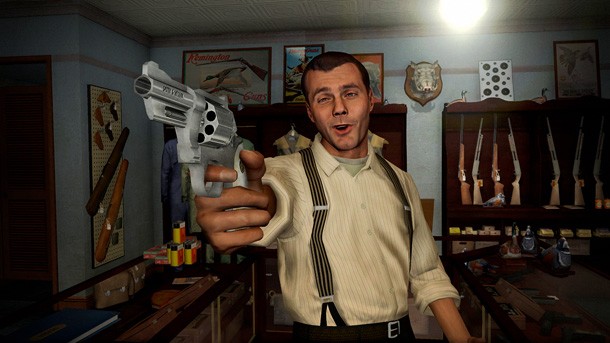
Giving Mrs. White some time to calm down, Phelps begins to look around the house. Noting that the couple apparently sleeps in separate bedrooms, he inspects Eugene White’s room. Near a table is a ticket to Seattle and signs of a missing suitcase. On another is a picture of Mr. White. Picking it up, Phelps pulls the picture out of its frame and inspects the back. Written on the back are the words “To My Eugene. Love, Nicole.” Clearly there’s more to this story.
Working his way around the back, Phelps stops in the kitchen, noting a matchbook from Cavanaugh’s Bar. From there, he walks outside to inspect the exterior of the house. On the side is a dismantled Instaheat water heater, the same brand as the pipe that was found at the scene. After assembling the pieces, it’s clear the murder weapon is the missing piece.
Pausing to call in for the address for Cavanaugh’s Bar, Phelps sits down to resume the interview with Mrs. White. Here we begin to see how the game’s interrogation process is used to extract information from witnesses. Following each response, you have three questioning options: coax, accuse, and force. Much like in Mass Effect, they set a general tone for your next response without tying you to canned dialogue options. While it’s easy to be tempted to play the heavy, pushing too hard will sometimes cause a witness to shut down entirely, making it impossible to extract any further information. However, if you can refute their statement with a fact or clue from your notepad, they will quickly backpedal, making each encounter a subtle game of verbal strategy.
Sitting down with Mrs. White, Phelps eases into the interrogation, asking her about the last time she saw her husband. She says he went out to meet a friend, Arthur, for a drink, noting that he did come home from work unusually early that day. Phelps then asks about the receipt for a live pig found on the scene, made out to “A. Hogan.” Making a face that clearly shows her disdain, she says, “A pig? Eugene runs a tool business. That would be Arthur Hogan. God knows what he’s up to.”
So far, Mrs. White’s body language and expressions indicate she’s being truthful. However, things quickly become tense when Phelps asks about the picture in the bedroom. Suddenly, her expression hardens and her eyes dart around the room. She blurts out, “What is there to tell? It’s from his recent business trip to Seattle.” Phelps changes tacks, selecting the “Accuse” option. “There’s more to tell and you know it!” exclaims Phelps. Mrs. White continues her denials, saying she knows nothing, but her face tells a different story. Consulting his notepad, Phelps selects the piece of evidence that should refute her story – the inscription from “Nicole” on the back of the photo.
Suddenly, her hard exterior cracks, and she breaks down in tears, admitting she knew about the affair. Faced with a murder weapon that came from the house, an adulterous husband, and a spurned wife, Phelps accuses her of the murder. It’s clear he overplayed his hand. Although she doesn’t have an alibi for the evening – she claims to be home alone – she clams up, telling us if we accuse her without proof the LAPD can expect a lawsuit. Since Phelps has no actual clues to refute her testimony, this part of the case is shut down.
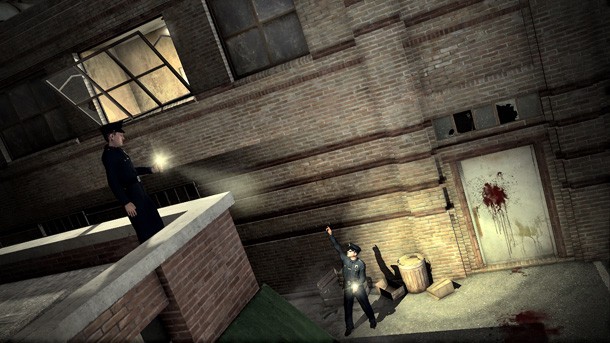
Cavanaugh’s Bar gives Phelps a new location to investigate, hopefully to locate the supposedly shady Arthur Hogan. After warping to the location via the map screen (the game gives you this option for those that tire of driving), we start exploring the dank dive bar. In the back room is Arthur Hogan, already well on his way to drunk. Hogan’s clearly a hard case, angrily spitting back, “Who wants to know?” when we ask his name. We ask if he knew that Eugene White was missing, to which he offers a nervous, completely unbelievable denial. Something smells fishy here. Phelps chooses to accuse, taking an aggressive approach. When Hogan denies being on the scene, Phelps reaches in his pocket and shows him the receipt for the pig found by the abandoned car. Hogan confesses that he and White had staged a fake murder, splashing pig’s blood on the scene (keep in mind this is before the days of CSI and DNA testing) so White could be free to join his mistress in Seattle. Seems like this “murder” isn’t a murder at all.
After Phelps threatens to take him into the alley and knock some sense into him, Hogan reluctantly gives up White. He’s hiding out in Hogan’s apartment on the corner of Temple and Figueroa, apartment two. After Phelps knocks on the door, White opens the door briefly and quickly slams it in our face. Phelps kicks the door down and gives chase over the rooftops. Pursuing White down a ladder and onto a patch of grass, we’re relieved to see that our partner Bekowsky has flanked around back and pulled our car around. He stops White at gunpoint. White confesses that he staged everything to get away from his wife, stammering “I…I thought it would be easier.”
“Hope she was worth it,” notes Phelps wryly before applying the cuffs.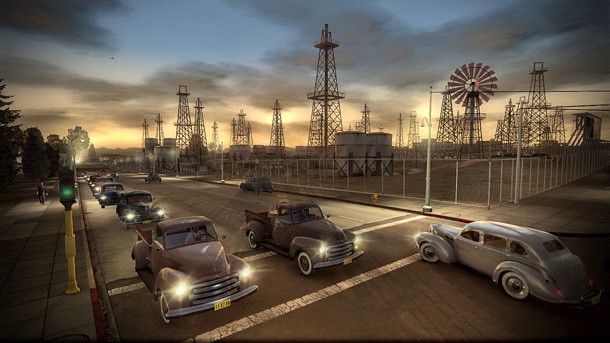
A New Formula
The White encounter is just one example of the myriad cases, both small and large, in the game, but it gives a great look into how L.A. Noire hopes to bridge the gap between adventure, action, and open-world gaming. Rockstar’s Barrera hopes the project will open up a new paradigm for the genre.
“The first time we got into the game I got the same sensation I got the first time I saw The 7th Guest [a classic PC adventure game – Ed.], but that was very simplistic,” he says. “This is the next evolution. When we were showing people the actors in the game, we actually had to put in the camera rotating them to show that it was a game and not video.”
With its smoky jazz score, period vibe, and a cerebral focus on storytelling and investigation, L.A. Noire is certainly a different kind of open-world game. Though passionate about the direction he’s chosen, McNamara realizes that the game needs to provide fans of Rockstar’s other, more visceral games enough thrills – something for which he’s relied on advice from his partners at Rockstar to provide.
“With The Getaway, the storytelling and characters were great, but it was just too hard to play,” McNamara comments. “Rockstar is really good at distilling it down to what kind of gameplay we want to get into. That comes across in what you’ve seen so far. We have the investigative stuff that makes it really interesting, but we also have the stuff that’s going to appeal to people who like shootouts and action. They have an incredible attention to detail. That’s been great for us, because we are a new team and we’re trying to do a groundbreaking game. We’re trying to do something that no one’s ever done before. Their help is important.”
Barrera feels they’ve hit on a formula that can both innovate and satisfy more casual fans. “It’s about opening it up for a lot of people and giving the people the option of playing it a lot of different ways,” Barrera declares. “The big challenge is that this isn’t a big body count game. You’re not running into people or starting big shootouts in the middle of the street. But we had to make things fun for people that like that sort of stuff. Or people that like to try to ‘break’ the game or the mission. We had to have those sorts of angles.”
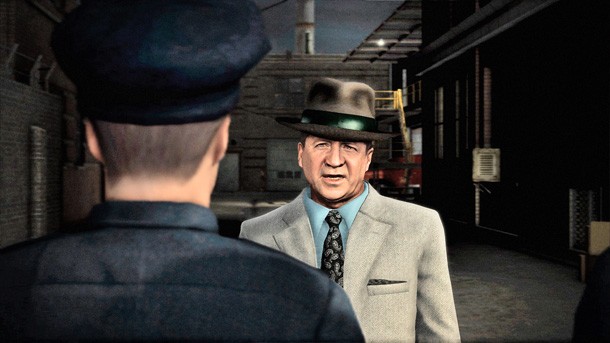
Though the investigations and characters are the core of the experience, the gameplay we saw featured plenty of action-flick fireworks, including a car chase, a shootout with some corrupt soldiers (working on behalf of the legendary shut-in millionaire Howard Hughes), and the aftermath of an explosion that levels several city blocks. At its best, the game combines the wide-open feel of a traditional sandbox game with the finely crafted interactive storytelling and player choice usually associated with the RPG genre – all in a setting and locale that feels far fresher and engrossing than the usual urban wastelands or war zones that are the staples of modern developers.
Whatever the end result, L.A. Noire already appears to be a very significant game. On the one hand it’s pushing the technology of game development in exciting ways. On the other, it’s using that technology to create a game that feels, in many ways, more human and personal than anything Rockstar has released so far. By tapping into a fascinating era in American history, bringing to life a Los Angeles that’s been lost to time, and creating characters with real emotional resonance, L.A. Noire could well be the most epic title yet from a company that’s spent the last decade remaking the gaming landscape.
Is it a risk? Sure, but Rockstar and Team Bondi seem confident that L.A. Noire will please its established fans while at the same time reach a new audience.
“I worry about it constantly,” Barrera reveals. “But that could be said about any of our games. Is it compelling? I love games and I play everything that comes out. Sometimes working on our games you get a little bit tired of what you’ve been working on. The whole time I’ve been working on this, it’s been really compelling to play this and watch the performances and unravel the mysteries. Then you also have the action there. For me, it’s a complete package.”
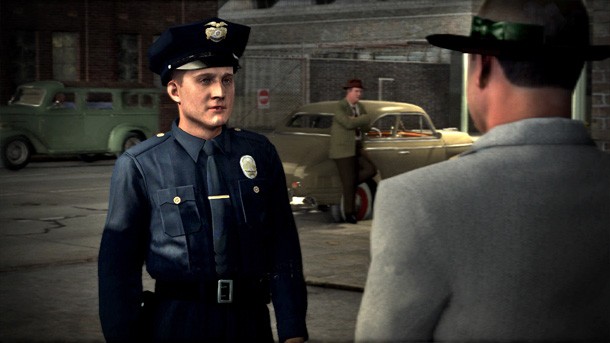
Rebuilding Los Angeles
“It’s like a time machine,” says L.A. Noire production designer Simon Wood. “That was my mantra.”
As the man tasked with recreating a massive swatch of 1947 Los Angeles, Wood has taken on this job with a near-obsessive commitment to detail. By Rockstar’s estimation, L.A. Noire will feature a game world that’s bigger and more detailed than any it’s created so far, and will be a near one-to-one recreation of the city at the time. That’s not to mention the over 140 interiors (many of which are multi-room structures) and the mind-boggling number of fully rendered objects that Cole Phelps can examine in his investigations.
To pull this off, Wood and his team conducted massive amounts of research, utilizing resources often reserved for history graduate students. From the UCLA and USC archives the team secured over 180,000 photographs from period newspapers like the Los Angeles Times, The Herald Examiner, and The Daily News. Placing these pictures side by side, they were able to get a view into a forgotten world. This exhaustive photographic data provided insight into everything from long torn-down L.A. landmarks to everyday details like how people dressed and how much food cost at local diners. For items they couldn’t track down, they consulted famous Hollywood prop and wardrobe houses like Western Costume to secure authentic period clothing (some of the clothes in the game were used in films like Saving Private Ryan and King Kong) and set pieces.
In crafting the game’s massive in-game map, which spans from the old downtown out to Hollywood, Wood realized the team would be recreating something almost unimaginable to current residents of the city: Los Angeles without freeways.
“It never dawned on me that L.A. didn’t have freeways,” Wood comments. “It’s like Sydney has an opera house and a bridge, L.A. has freeways. Some [landmarks] were still standing, but with the L.A. building boom, they level things quickly. Nothing stands for long. [In the game] you can drive down streets that don’t exist anymore.”
In L.A.’s Huntingon Library, the team pored over massive, hand-drawn maps created in the ‘40s by President Franklin Roosevelt’s Works Progress Administration, as well as early aerial photography of the area. While not willing to say that it’s 100 percent accurate, Wood feels that the streets of L.A. Noire are as close as humanly possible to the actual L.A. of the time, right down to the storefront windows, which are modeled in 3D with accurate period products.
Help in modeling the numerous vintage vehicles in the game came from a slightly less academic source: late night comedian Jay Leno. “We photographed Jay Leno’s private car collection,” remembers Wood. “You can drive around in Jay Leno’s private fire truck! He’s got a garage like in Iron Man or Wayne manor. He was there, and when he opened it up, the boys were gobsmacked. It’s endless.”
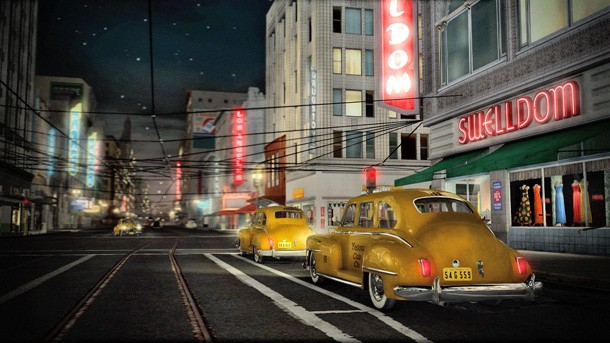
True Crime
Though told through the lens of a crime drama, L.A. Noire is Team Bondi’s game director Brendan McNamara’s attempt to explore a city and a time period that has long fascinated him. As with The Getaway, the sense of place is key to the game.
“For me, when you write something there’s always some reason,” McNamara says. “The Getaway for me was because I’d lived in London for some years. It was in a sense what London meant to people, whether you were Australian, or Jamaican, or British. With this, I grew up in that post-Vietnam mindset of what America is about. You see all the old movies and think that America had this amazing moral authority post-World War II. It’s been a constant slide since then and I wondered where that started. [In the ‘40s] there was this veneer of what America was, and then there was this undercurrent of what was really happening. Hollywood was marketing this model of the world to everyone – the California dream. We bought into that even in Australia.”
McNamara uncovers the dark side of the Golden State in that game’s criminal cases, which occupy much of your time in the game. To make sure that L.A. Noire feels as real as possible, he conducted countless hours of research, reading crime reports from local newspapers. Over 90 percent of the game’s cases are based on real incidents, with some alterations to make sure the action is engrossing and to ensure that participants in the events or their living relatives are not brought to light. In conducting research, the team quickly learned that the 1947 L.A. was far from the sunny, pastoral city portrayed in many films.
“Early on, when I met Brendan and he was showing me the research stuff, the crime books from the time were unbelievable,” says Rockstar producer Jeronimo Barrera. “We have this perception that the late ‘40s were idyllic, but it was brutal. The amount of things that we won’t touch on in the game, like child abuse, was horrific.”
“Some of them were too wild to use,” adds McNamara. “One was about a preacher walking down Broadway with a bullwhip, whipping non-believers. [Laughs] We thought that was a great story, but we didn’t know how to work it in. There was a guy in Santa Monica who was driving a four-engine plane down the street at midnight. He had an accident because he didn’t have lights on the plane – if you came up with that at a design meeting, people would throw you out!”
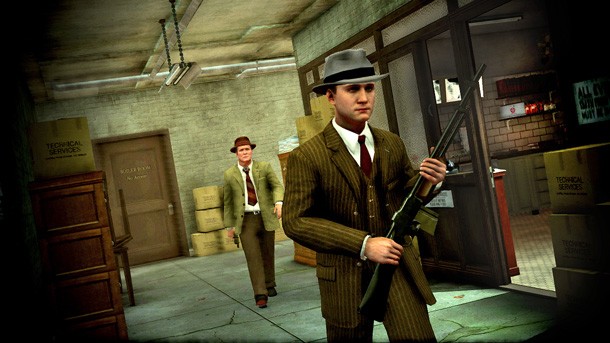
The Life of a Detective
L.A. Noire draws on reams of real-life history, but the saga of one man, Cole Phelps, holds it together. While Rockstar didn’t reveal the game’s story in much detail, it’s clear that Phelps’ personal history hides some secrets.
Aaron Staton, who plays Phelps in the game, sees Phelps as a flawed, but ultimately good, man.
“He’s a man with strong convictions and ambitions,” Staton comments. “He’s certainly conflicted and harbors some dark regrets and guilt about some of his actions in the past, in World War II. There have been promotions and accommodations that – to most people – would seem like a positive thing. But when you’re rewarded for something questionable, I think you carry a shame about it. In all of these missions, he’s trying to prove to the people around him and to himself that he’s worthy. I think he climbs the ranks quickly because he’s intelligent and capable, but that doubt leads him to making mistakes as well.”
Throughout the game, Phelps will progress through the ranks of the LAPD through what Team Bondi calls the “desk system.” As in a real police force, there are different departments (desks) that deal with specific types of crime. At first, Phelps will be a simple beat cop, skulking through L.A. alleys for evidence on simple crimes. As he solves more cases, he’ll be promoted to different desks like traffic, vice, burglary, and arson. Ultimately, he’ll make homicide detective, the most prestigious job in the department. At each desk, he’ll be teamed with a new partner, some of whom are more useful (and trustworthy) than others. Along the way, he’ll learn that the police themselves are not saints – Team Bondi’s game director Brendan McNamara points out that the real-life corruption that scandalized the force in the late ‘40s will definitely impact Phelps during the game.
For McNamara, the real challenge was to create a character that will go through real changes over the course of the adventure, something games have struggled to do.
“Who he is at the beginning is completely different from who he is at the end,” McNamara says. “There’s a journey. In most games – even my old games – who someone is at the beginning is who they are at the end. You don’t get that in movies or literature – people change. We want you to go on a journey with him. We’re trying to pull that off.”
This feature first ran in the March issue of Game Informer Magazine.


